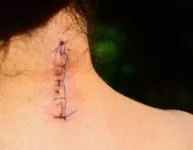After surgery, you need to take good care of yourself and ensure that the incision does not get infected when you are back home. Your doctor might have used staples, stitches, or tape strips to cover the incision. Dallas Wound Evolution – Wound Care and Hyperbaric Medicine can help you treat an infected wound.
However, certain habits can ruin the healing process and lead to infection. This infection can cause additional issues. In this blog, we have listed all the essential tips to take care of your wound to eliminate the risk of infections and complications.
Tips for Reducing the Risk of Infection:
- Do not scrub or apply lotion or powder to the incision.
- Avoid taking a shower unless your doctor recommends it.
- Keep your incision away from sunlight.
- Do not remove the tape strips from the incision until your doctor instructs you to remove them.
A patient may experience tenderness, soreness, tingling, and itching at the incision site. These symptoms are normal and do not pose a risk.
Incision Care Tips:
1. Changing the Dressing
Changing the dressing is essential to avoid infection. Usually, your caretaker can change the dressing without the need to visit a doctor. However, you must check with your doctor about the dressing changes for reliable advice. Before you begin, you must have medical gloves, surgical tape, gauze pads, scissors, and a plastic bag.
- Wash your hands and wear medical gloves.
- Detach the old dressing.
- Clean the incision if your doctor recommends.
- Place the gauze pads around your incision.
- Tape the sides of the gauze pads.
- Put all the waste and gloves in a plastic bag.
2. Cleaning the Incision
- To remove any crust, wash it with water and soap.
- Do not scrub the wound.
- Do not use hydrogen peroxide or iodine. It may harm your tissue and can slow down your healing.
- Before applying the dressing, air-dry the incision or pat dry with a clean towel.
3. Caring for Stitches, Staples, and Tissue Glue
Usually, stitches or staples cause redness and swelling, along with itching and irritation. It is normal to see drainage from the incision for the first few days. However, if it increases after a few days and becomes bright red with blood and includes pus in it, it could be a sign of infection, and you must consult your doctor.
When to See a Doctor?
Consult your doctor immediately if you notice any of these symptoms:
- Redness or swelling
- A bad smell
- Bleeding or pus
- Pain that gets worse
- Increase in drainage from the wound.
- Temperature goes above 100 F for more than 4 hours








